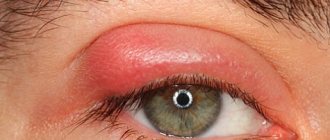Benign tumors of the pharynx, which include a cyst on the tonsil, are quite common, especially in people with chronic tonsillitis and adenoids. Such neoplasms are most often benign in nature. But, despite this, experts recommend using predominantly surgical treatment, since excessive tissue growth can at any time lead to malignancy of cells. In addition, cysts on the tonsils create obstacles to swallowing and breathing, often cause exacerbation of chronic ENT pathologies and reduce a person’s quality of life.
Tonsils are a filter for pathogenic microorganisms and perform a protective function. But with excessive tissue growth, they turn into a source of chronic infection. Cysts on the tonsils are treated mainly surgically, since conservative therapy is ineffective.
At the CONSTANTA Clinic in Yaroslavl, tonsils and cysts are removed by experienced otolaryngologists using modern endoscopic equipment. Endoscopy in otolaryngology is the gold standard of surgical treatment, which is characterized by minimal trauma and maximum efficiency. We provide our patients with qualified services and assistance from wide-ranging ENT specialists.
Bumps in the mouth: what they are, their causes and treatment
Any neoplasms in the oral cavity require careful study of the clinical picture. This can be either a harmless growth or an alarming signal from the body. Thus, a lump on the roof of the mouth often occurs as a result of a cold or infection. This formation does not cause discomfort and resolves on its own after strengthening the immune system. If the growth is accompanied by pain and other unpleasant symptoms, this may indicate a serious pathology. Only a doctor can determine the cause of the lump and tell you what to do.
Complications of tonsil cysts
A cyst on the tonsil is a chronic source of infection that can behave in an unknown way, causing various complications. The neoplasm in the pharynx is constantly rubbed with food, which leads to the formation of a chronic inflammatory process. The longer the patient does not seek medical help, the longer the infection progresses; along with the bloodstream, infectious pathogens are carried to all cells and organs, disrupting their normal functioning.
A long-term infectious process is accompanied by general intoxication of the body. Toxins produced during the activity of pathogenic microorganisms disrupt the functioning of the liver and kidneys, provoke the development of chronic fatigue syndrome, reduce immunity and make a person vulnerable to even the most harmless infections.
Only an otolaryngologist can choose the treatment for a cyst on the tonsils, based on the results of pharyngoscopy. If the doctor suspects the development of a malignant process, a consultation with an oncologist will be required. Other studies may also be prescribed: rhinoscopy, audiometry, computed tomography and magnetic resonance imaging of the brain, otoscopy. In advanced cases, the tumor can grow into nearby tissues, including brain structures.
Why do bumps appear in the sky?
A growth in the mouth appears as a result of blockage of blood vessels and stagnation of organic fluids, which causes inflammation in the mucosal tissues. Among the most common causes of pathology are the following:
- bad habits – alcohol abuse and smoking;
- chronic diseases – sore throat, sinusitis;
- constant exposure to traumatic factors - incorrectly fitted crowns that become infected, eating too hot food, sucking on lollipops, etc.;
- insufficient oral hygiene - food remains behind the teeth become a favorable environment for the development of pathogenic microflora;
- inflammation of the salivary glands;
- colds and infectious diseases;
- Doctor’s mistakes – incorrect filling or tooth extraction.
A child can also develop a lump in the mouth. In most cases, the pathology occurs due to bruises, which are quite common in childhood.
Bumps also form in the mouth due to cancer (leukoplakia and papillomatosis), which pose a great danger to human health and life.
Prevention of recurrence of tonsil cysts
After removal of the cysts, relapse of the disease may occur. To avoid this, it is necessary to prevent the occurrence of situations that provoke inflammation of the mucous membrane of the oropharynx. Try to promptly treat ENT diseases, especially tonsillitis, and avoid injury to mucous tissues. If you smoke, if possible, give up the bad habit or reduce the number of cigarettes you smoke to 1-2 per day. Tars and other substances contained in tobacco have an irritating effect on the throat and can provoke an exacerbation of sore throats.
If the patient has a history of frequent ENT diseases and relapses of tonsillitis, then the doctor may recommend removing the entire tonsil. A tonsillectomy will relieve you of chronic infection and many other health problems. But tonsil removal is carried out according to indications. You can talk about the need for total resection with the doctors of the CONSTANTA Clinic at your appointment.
If you have any questions or make an appointment with a specialist, please call: (4852) 37-00-85 Daily from 8:00 to 20:00
Sign up for a consultation
General symptoms
A tumor formed in the oral cavity can be of different colors: white, dark red, blue, transparent yellow. Sometimes it is soft, in other cases it is dense. A lump that appears against the background of one pathology may differ depending on the individual characteristics of the patient’s body: age, general condition of his body, bad habits, etc.
The lump appears in the form of a bubble, growth, ball, compaction, tumor with faint edges. Spots (change in color of the mucous membrane) may also form in the affected area. In some cases, numbness is felt in a certain part of the oral cavity, difficulties appear when swallowing, and the voice changes. In advanced forms of the disease, the cones may be damaged, which provokes bleeding with an unpleasant taste and odor.
Painful lumps indicate inflammation and suppuration. General health worsens, body temperature may rise. Purulent intoxication of the body occurs. In this case, the lump grows, it becomes hard and hot, and the regional lymph nodes enlarge.
Treatment of tonsil cysts
Treatment of cysts can be either conservative or surgical. Often, specialists first prescribe effective drug therapy to relieve inflammation and prepare the patient for surgery. Conservative treatment of a cyst will not reduce its size, but can stop the active growth of the tumor and prevent complications. Treatment tactics should be selected by a competent specialist based on medical history, diagnosis and professional examination.
Conservative therapy for tonsil cysts includes the following measures and procedures:
- gargling with herbal decoctions, antiseptic solutions that disinfect tissues and have an anti-edematous and anti-inflammatory effect;
- physiotherapy: ultraviolet irradiation, massage, ultrasound - physiotherapeutic treatment methods are used to increase blood supply to tissues in the area where the tumor is located, to ensure lymph outflow;
- pumping out pus using hardware methods, which makes it possible to stop the development of the infectious process and the spread of infection to surrounding tissues;
- injection rinsing of the tonsils with anti-inflammatory drugs and antiseptics to cleanse plaque and purulent contents;
- strengthening the immune system with multivitamin complexes and immunostimulants;
- giving up bad habits that contribute to traumatization of the tonsils and the preservation of the chronic inflammatory process.
Some specialists practice opening the cyst and pumping out its contents. But, as a rule, the therapeutic effect does not last long and the tumor is filled with fluid again. Therefore, if the cyst has not disappeared after several weeks of active medical therapy, it is better to remove it surgically.
Diagnosis of diseases accompanied by the formation of lumps in the mouth
Tumors have appeared in the mouth, and the question is, which doctor should I contact? This symptom is a prerequisite for visiting the dentist. To diagnose the disease, the doctor will first conduct a visual examination and palpation, and collect an anamnesis. A puncture is taken from the resulting lump and a bacteriological examination is carried out, which makes it possible to determine the cause of its occurrence.
Based on the results obtained, the doctor determines the need to use other diagnostic methods:
- general tests;
- X-ray;
- Ultrasound;
- biopsy.
If the cause of the formation of a lump on the upper palate is beyond the scope of the dentist’s competence, the patient is prescribed consultations with other specialists (pediatrician, therapist, gastroenterologist, endocrinologist, hepatologist). Only after making a diagnosis will the doctor determine how to treat the disease.
Dental diseases
At an advanced stage of periodontitis, a fistula forms near the tooth involved in the painful process. If periostitis (inflammation of the periosteum) develops, flux may appear. At first the lump is hard, but over time it becomes softer and filled with pus.
In case of periodontitis, the tooth is unfilled and the root canals are cleaned. After removing the exudate, oral baths are prescribed using special solutions. In case of periostitis, the dentist opens the tooth, places medications in the cavity, and closes it with a temporary filling. If this treatment does not help, the tooth is removed.
Angioma
It is a benign formation, which in most cases is a congenital pathology in children. It consists of blood vessels and is dark red in color. Sometimes it looks like a small ball on a leg. Lymphangioma, formed from lymphatic vessels, most often appears on the soft palate. It looks like a small bump with a bubbly surface. First, the tumor grows inside, then a swelling appears that hurts.
The choice of treatment method depends on the type of vessels. The angioma is removed or reduced by sclerotherapy, alcohol injection, or radiation therapy. If there is a risk of severe swelling, the formation is excised with a scalpel. The ball-shaped angioma is removed using a galvanoacoustic loop.
Classification of pimples
There are many types of pimples on the tongue. They are classified according to four characteristics: color, location, size and pain.
Color
- Natural, red-pink.
Growths that do not differ in color from the tongue and are painless are warts or condylomas. - When red or bloody pimples
, such as in the photo, their cause may be a burn, herpes, or allergic reactions. - Red bumps that turn black
are associated with mechanical damage or injury. The black color appears due to microhemorrhage.
Location
- On the tip of the tongue.
Often this place is subject to injury and various damage, which can cause inflammation. First, a small bump appears on the end of the tongue, then a painful red or black pimple. - On the side.
In most cases, pimples are localized in this place, as a result of stomatitis, as well as benign neoplasms. - At the larynx.
Red pimples on the tongue closer to the throat often turn out to be benign formations: condylomas, warts. - Under the tongue.
Lumps and bumps in this place (near the frenulum) in both adults and children indicate inflammatory processes: tonsillitis, sore throat, pharyngitis.
The size of the formations can be large, medium or small.
Presence of pain
- Painful sensations.
Pimples resulting from injuries, burns, inflammatory and infectious lesions of the oral cavity and larynx. Pain manifests itself when touching the tubercles; it hurts a person to speak or swallow. - There is no pain.
In most cases, painlessness is characteristic of warts and condylomas. Benign neoplasms often affect the root of the tongue; you can see how it looks with pimples in the photo.
Preventive measures
To reduce the risk of developing pathologies in the oral cavity, you should follow a number of recommendations:
- quit smoking and alcohol;
- normalize nutrition - do not eat hot, salty and spicy foods, introduce fermented milk and plant products into the diet;
- carefully and regularly observe oral hygiene;
- start treatment of any pathologies in a timely manner;
- Take vitamin complexes periodically (after consultation with your doctor).
If you experience the slightest discomfort in the palate, you should see a dentist. Paying attention to your health prevents the development of complications.
Surgeries for tonsil cysts
The smaller the size of the cyst, the easier it is to perform surgical treatment. Small neoplasms with a thin wall are usually opened and the contents are pumped out. In the future, treatment continues and consists of the use of anti-inflammatory drugs and high-quality antiseptics. If this technique turns out to be ineffective, a classic operation is performed, when a specialist removes the tumor itself or all the tonsils if they show signs of hypertrophy and do not perform their protective functions.
The extent of surgical intervention depends on the size of the tumor, the condition of the ENT organs and the general well-being of the patient. The operation can be performed either under local anesthesia or general anesthesia. As a rule, long-term hospitalization of the patient is not required. It is very important to remove the cyst completely to eliminate the risk of recurrence of the pathology in the future. If the tumor is large, actively growing and often worsens tonsillitis and other ENT diseases, then a tonsillectomy is prescribed - an operation to remove the tonsils.
In our Clinic, such surgical interventions are performed using high-quality endoscopic equipment. Often, tonsillectomy is the only correct solution for frequently recurring tonsillitis and cysts on the tonsils.
After surgery, the patient is under the supervision of specialists for some time. Doctors monitor the patient’s condition and, if problems occur, provide the necessary medical assistance. The first day after removal of cysts or tonsils, you must observe relative rest: sports, visiting baths and saunas, and public swimming pools are prohibited. These restrictions are necessary to prevent bleeding and prevent the development of infectious complications. Food should be warm and as gentle as possible. During the first weeks, you should not eat foods that can injure the oral mucosa.
In the postoperative period, specialists can prescribe medications whose actions are aimed at relieving sore throat, relieving signs of inflammation and preventing secondary infections. Local procedures for gargling and irrigating the throat with antiseptics are also prescribed. Antiseptic treatment of the wound remaining after surgery must be carried out several times a day.
You should be attentive to your well-being and if you have any complaints, contact your doctor. Surgeries to remove cysts are successful, but in any case, patients must visit an otolaryngologist for several more months so that the doctor can monitor the quality of healing of the mucous membrane and, if there is a risk of relapse of the disease, can take all necessary therapeutic measures.
If you follow all medical recommendations and avoid heavy physical activity in the first weeks after surgery, the risk of relapse of the disease and complications will be minimal. You can ask the specialists of our Clinic in Yaroslavl all your questions. We will be happy to advise you and help you even in the most difficult clinical situations. For this, doctors have everything they need: innovative technology of European quality, rich practical experience of otolaryngologists, professional knowledge.










